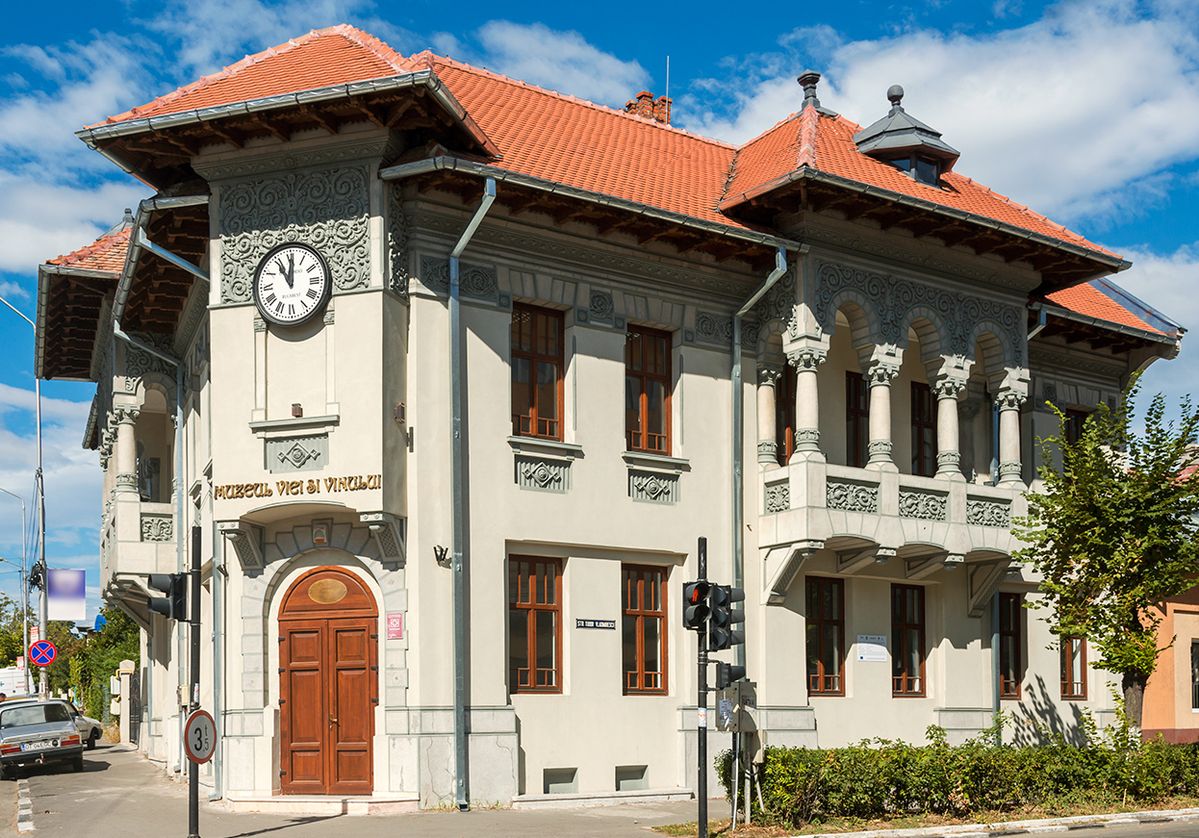#14590. Elegant Historical Facade with Neoclassical Elements: Harmony of White Walls and Terracotta Roof

Before us stands an exquisite example of early 20th century architecture blending neoclassical elements with Art Nouveau influences. The building is a two-story structure with a distinctive orange tiled roof that creates a striking contrast against the pristine white facade. Particularly noteworthy is the richly decorated exterior featuring elegant Corinthian columns across the facade, supporting the protruding balcony of the second floor.
The building's facade is adorned with intricate carvings and ornamental details – notice the elaborate patterns above the windows and surrounding the clock that is built into the corner section of the building. The clock face is seamlessly integrated into the overall composition, serving not only as a functional element but also as an architectural focal point. The substantial wooden doors with their semi-circular arched top emphasize the monumentality and status of the structure.
An interesting detail is the wide cornices with decorative brackets that create deep shadows and give the building a visual lightness despite its substantiality. The symmetrical arrangement of windows with wooden frames and meticulously crafted surrounds highlight the harmony of the entire composition. When designing the facade of a private residence, one could adopt this principle of combining contrasting materials and colors, as well as the use of classical proportions with a contemporary interpretation.